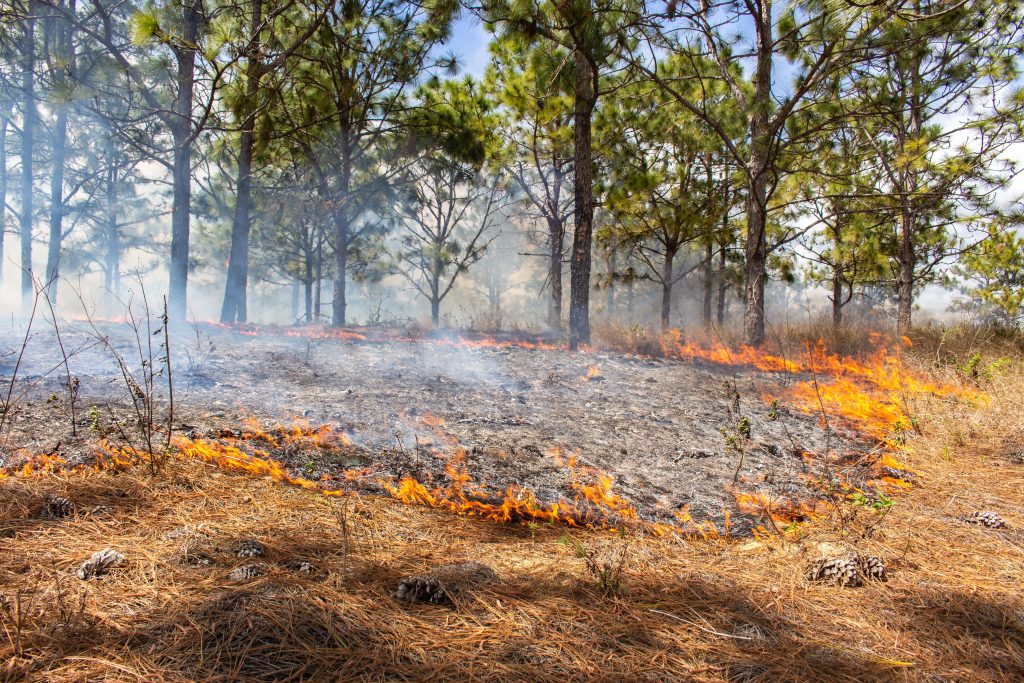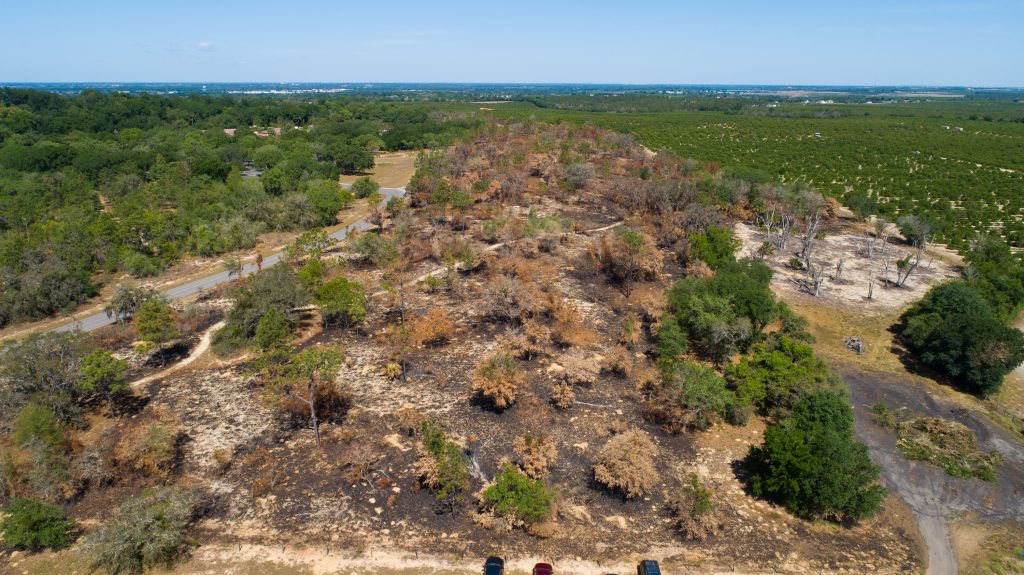Being good stewards means returning fire to the land. Bok Tower Gardens is undergoing several large-scale preservation projects that require prescribed burns. This blog posting from 2020 illustrates the importance of fire to our operations.
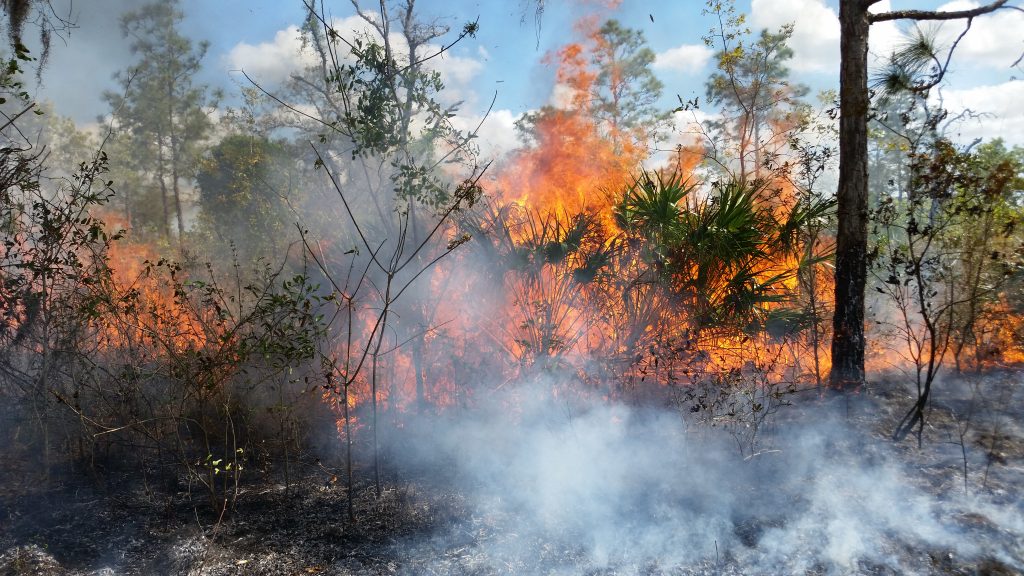
Soaring above the Gardens, you see a patchwork of lands: the geometric lines of the orange groves, a shimmering blue lake, lush green vegetation, and a blackened patch. That burned area is important in maintaining a healthy habitat for people and nature.
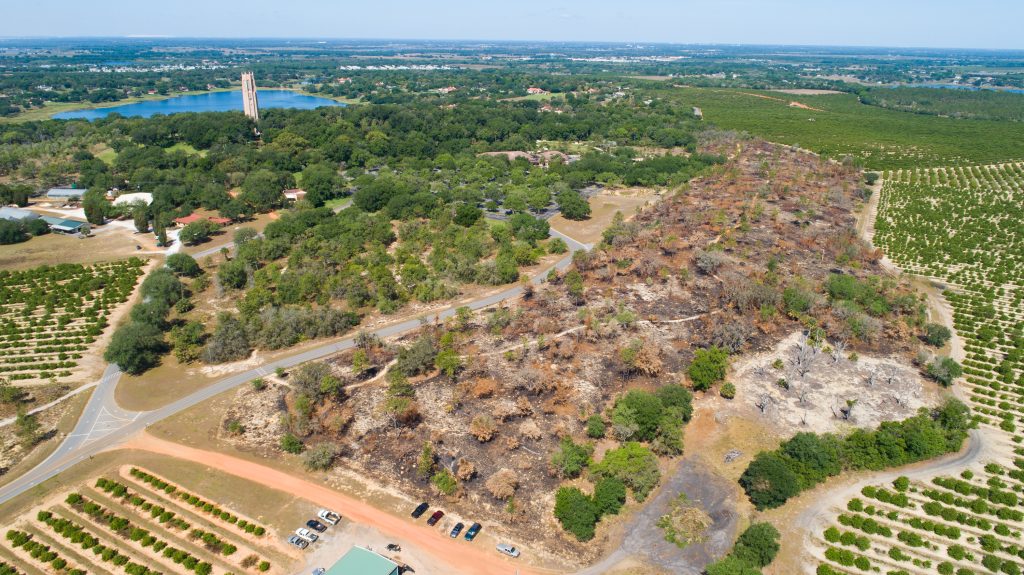
Just days before this picture was taken, on March 20, 2020, fire management professionals conducted a 25-acre prescribed burn on the natural lands adjacent to the Gardens, called the Pine Ridge Nature Preserve.
It may seem counterintuitive, but fires serve important functions, such as reducing the risk of catastrophic wildfires by limiting overgrown vegetation, controlling invasive species, and maintaining healthy habitats for plants and animals.
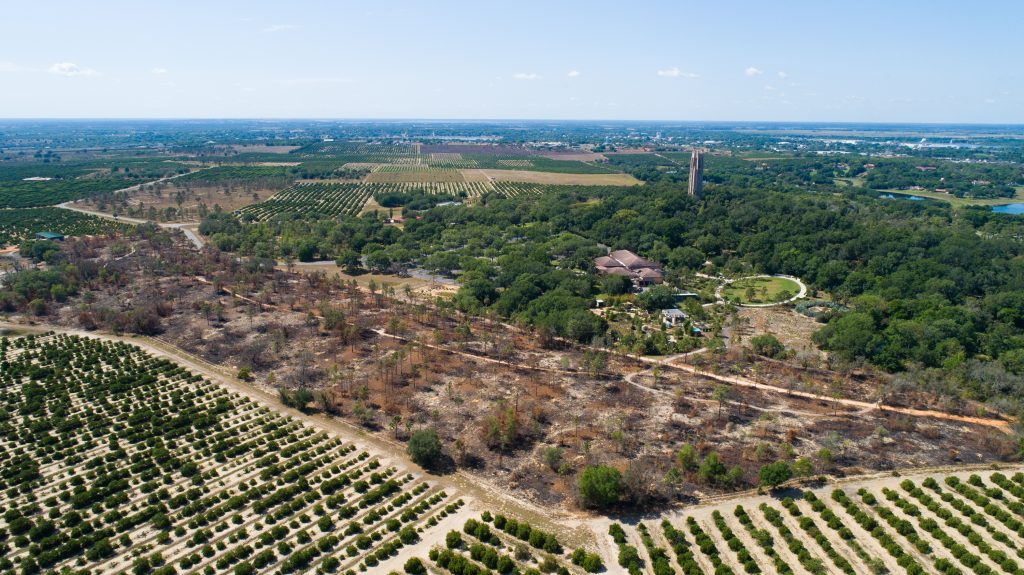
Fire is integral to the health of natural lands. Professional fire managers initiate controlled fires in habitats that are made up of plants and animals that have adapted to a regular, natural fire cycle. We burn every two to five years to mimic historical fire occurrences in the Sandhill ecosystem.
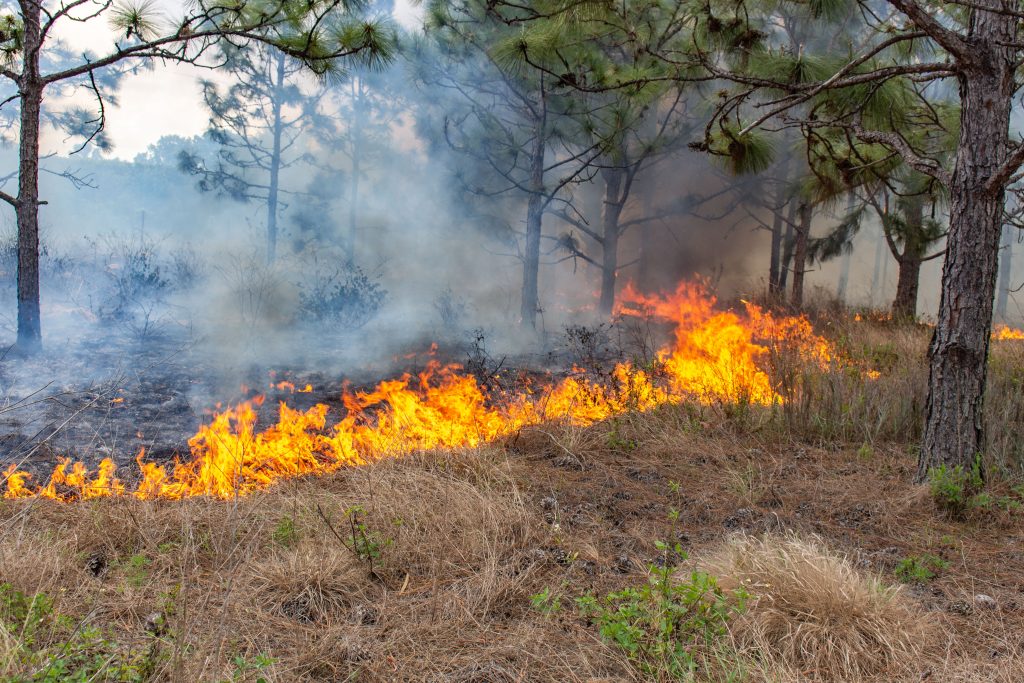
When vegetation becomes overgrown, it can become unsuitable for some wildlife. The only bird unique to Florida, the Florida scrub-jay, can’t survive in overgrown habitat.
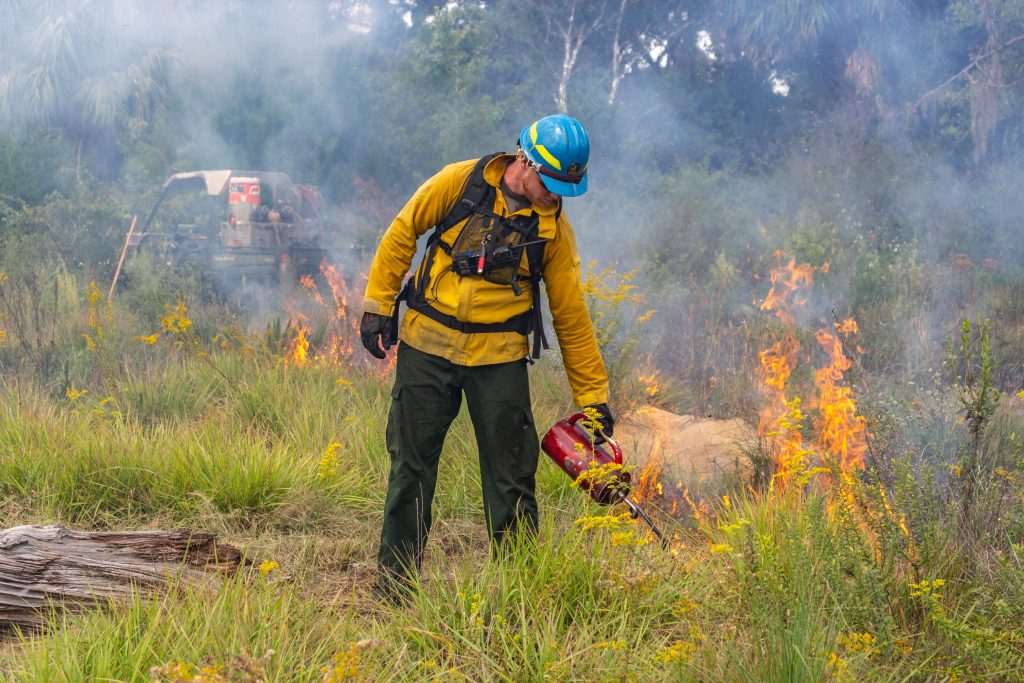
Without fire, certain plants like wiregrass will not set seed.
Our land management staff brought in trained professionals to conduct a controlled burn to mimic the role of natural fires.
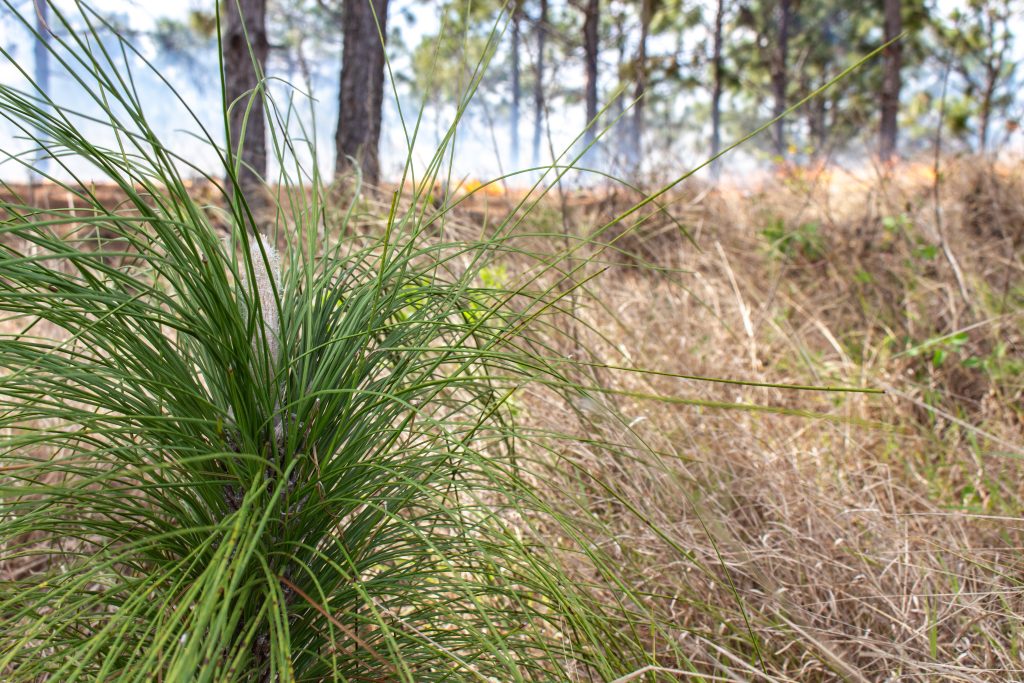
Fire, ignited by lightning, once spread across the landscape until it encountered a creek or lake. Today, trained fire professionals conduct control burns. Fire managers carefully choose when they burn based on weather and vegetation conditions. The Florida Forest Service issues permits.
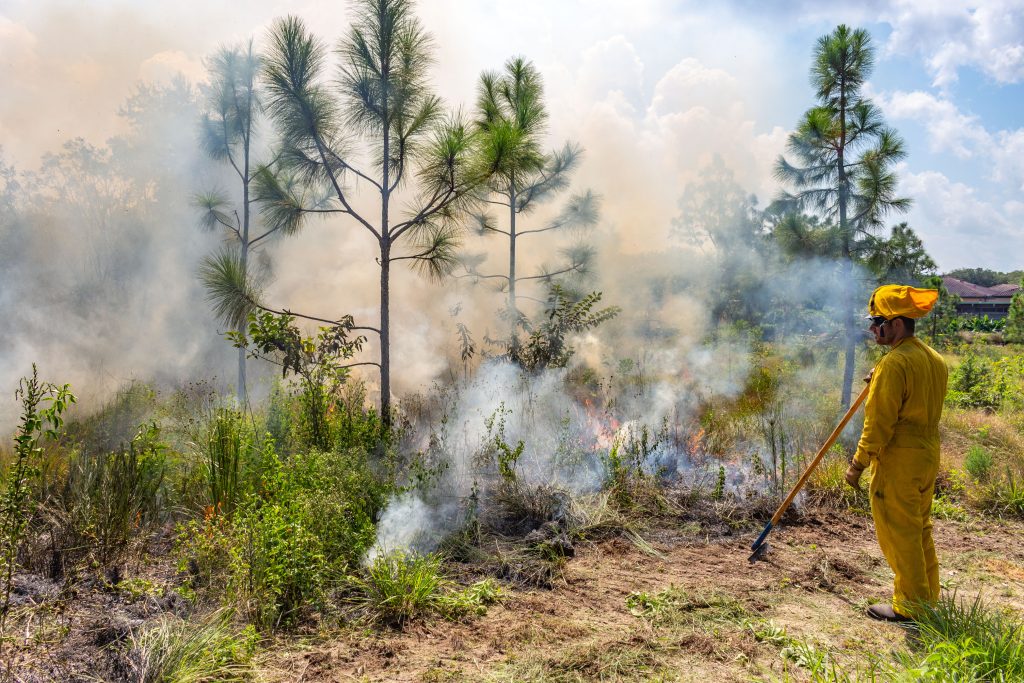
Fires are conducted to offer animals escape routes, often with low flames that allow animals to flee or escape into burrows. Just days after a burn, fresh plant growth emerges that provides food for wildlife. Though it appears destructive, fire is a force for renewal.
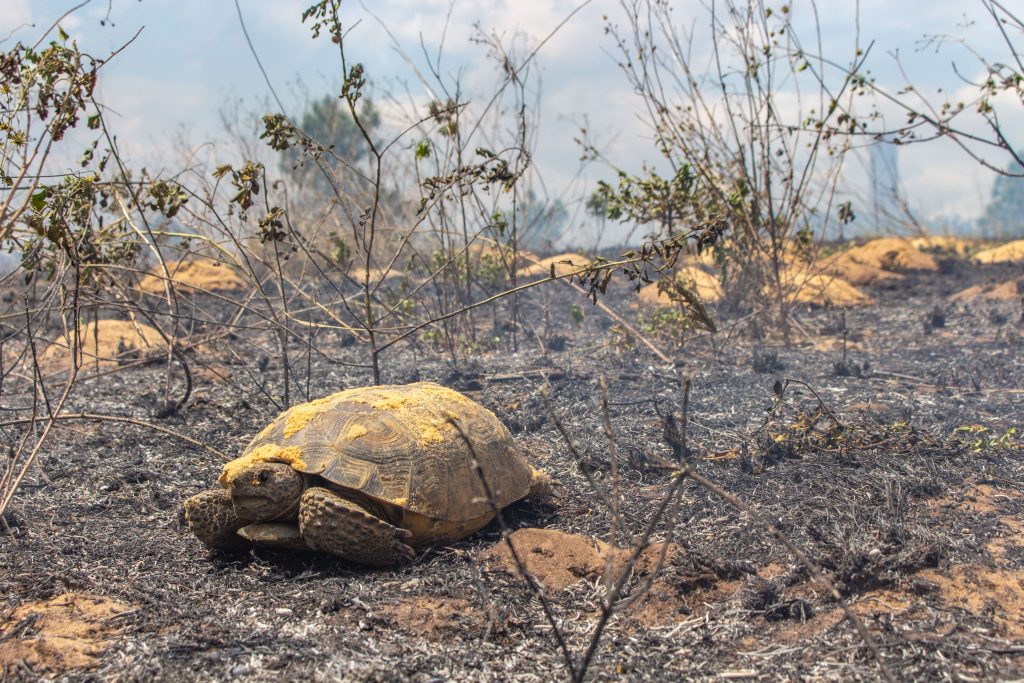
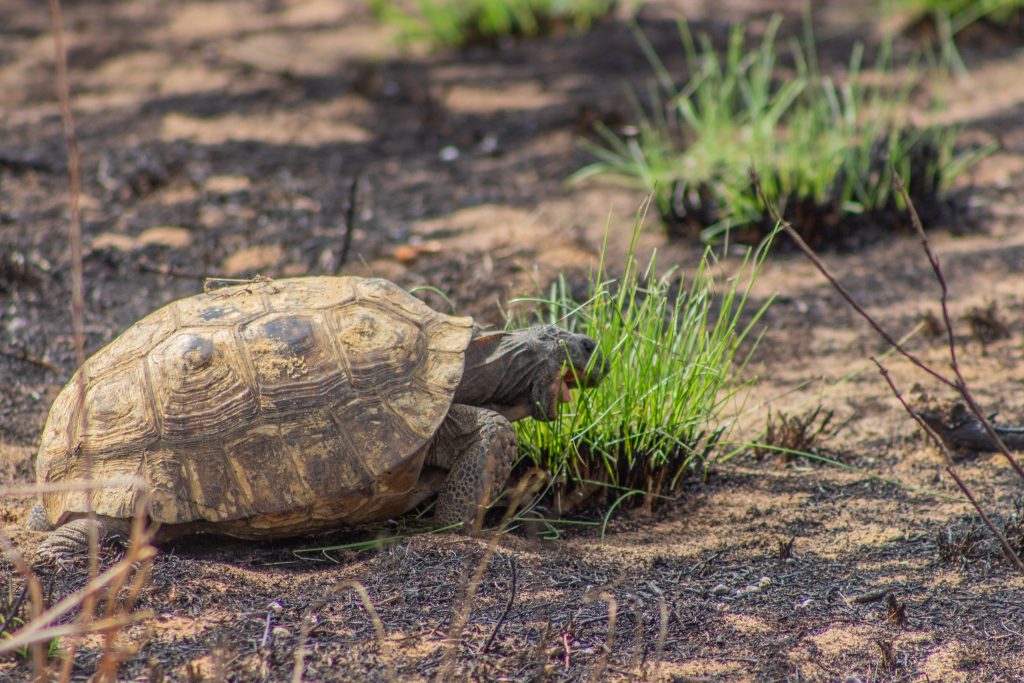
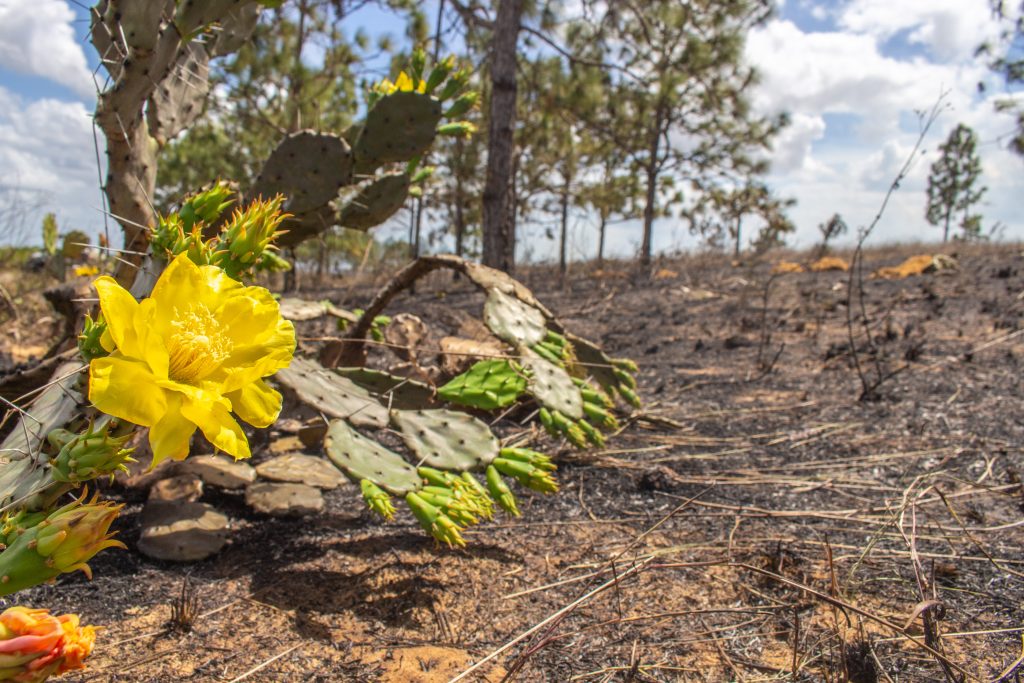
ricia Martin, Director of Education, wrote this blog. The aerial photographs were made possible by the generosity of Joel Faubert, a producer at Potthast Studios who donated his time to photograph and document the burn.
